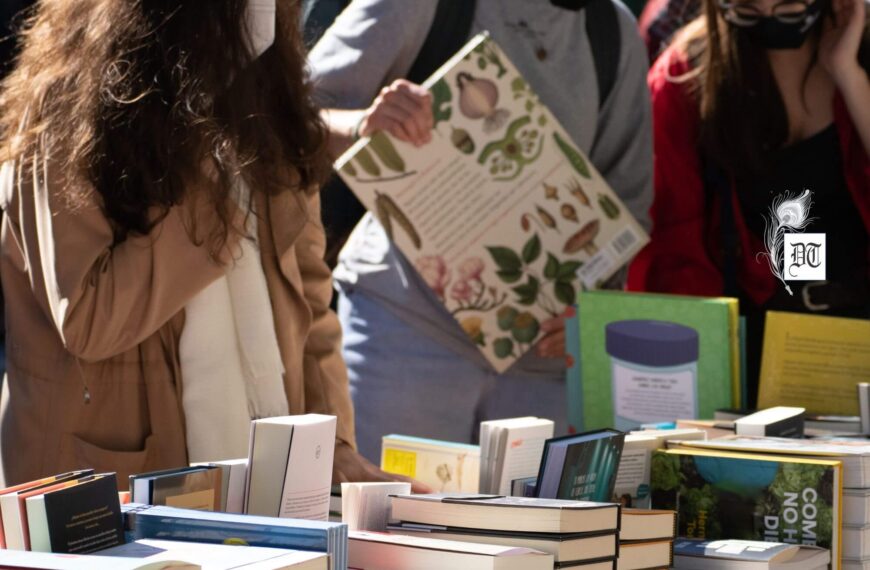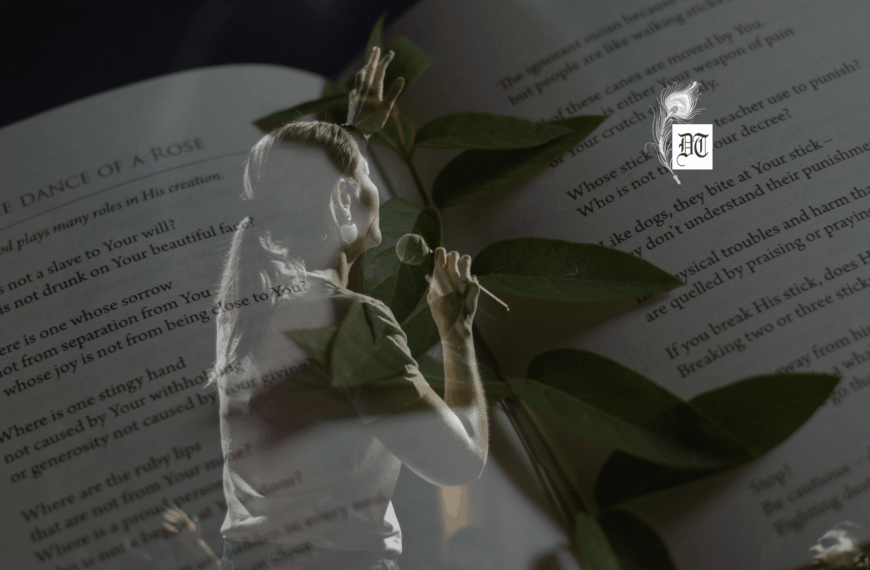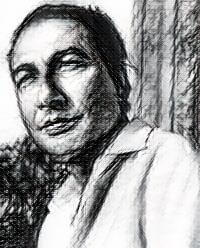Continuing with the theme of Indian Writing in English, Basudeb reiterates that the English language united various parts of India under the British rule. He talks about an early novelist of this genre, in this week column, exclusively in Different Truths.
A quick recap from last week’s column: Literatures in different Indian languages before and after the British rule in this country were rich. The phrase, Indian literature before and after the Indian Independence meant Bengali literature, Tamil literature, Marathi literature, Punjabi literature, Assamese literature and so on. But literature written in English even long before the Indian Independence is known as Indian literature in English. Nobody says Indian literature in Bengali or Indian literature in Tamil or Indian literature in Marathi and so on. The purpose of referring to this historical fact is to show that the ethos of Indianness as something indivisible, unitary and single has found its expression in Indian literature in English. English united various cultural groups in India. Creative writers living in geographically, culturally and linguistically different regions of this vast land realised the importance of the concept of Indian nationalism which the English language intensified. This is one of the major reasons for the beginning and the growth of Indian literature in English.
The first incomplete novel written in English is Bankim Chandra Chatterjee’s (1838-94) Rajmohan’s Wife (1864). Chatterjee perhaps wrote this novel in English with a view to widening the reading public of his novel. Had it been written in Bengali, non-Bengali Indian readers could not make access to this novel. He intended to write this novel for the limited number of English knowing reading public in India. This may be one reason. The second reason, which strikes very important to me is that by writing a novel in English Chatterjee made an attempt to construct Pan-Indian nationalism. This attempt may also be the author’s tacit support of the fact that the English language is ‘a window on the world’. English is not only the language of the colonial rulers in India but also the ‘Ideology’ of Indian reality. It would not be exaggerating to say that this novel overlaid the creation of a first Indian novel in Bengali Anand Math, which inspired the colonised Indians to utter Vande Mataram.The lyrics of the song which are in Sanskrit with an exception of one line written in Bengali evoke the spirit of the fight against the foreign rulers. And this underlines the Indian nationalism standing against the foreign rule. Vande Mataram is out national song till date.
Something about this novel needs to be mentioned. Rajmohan’s Wife is an important venture undertaken by Bankim Chandra Chatterjee because the novelist never tried again to write any novel in English. He in subsequent years published novels, Durgesh Nandini, Anandamath, Devi Chowdhurani and others all written in Bengali. All these novels stir the nationalistic feelings in the minds of the contemporary readers. From the historical point of view, this novel’s importance cannot be also ignored.It will be wrong to think that after Bankim Chandra Chatterjee’s Rajmohan’s Wife no one in Bengal attempted writing novels in English. Chatterjee became the Literary Emperor in Bengal because of his monumental and epoch-making novels he wrote in Bengali. Those immortal novels like Durgesh Nandini, Kapalkundala, Vishavriksha, Anandamath, and Devi Chowdhurani—all were translated into English soon after their publication in Bengali. Along with this spectrum of writing novels in Bengali, novel writing in English was also the fashion of the day. Raj Lakshmi Devi published her novel The Hindu Wife in 1896. Toru Dutta, who excelled more as a poet than as a novelist published her novel, Bianca, in 1878. Kali Krishna Lahiri  published his novel Roshanara in 1881.Khetrapal Chakravarti’s Sarata and Hingana was published in 1895. All these novels written during the heyday of the immortal and glorious publication of novels written in Bengali by novelists like Bankim Chandra Chatterjee, Ramesh Chandra Dutta, and others remained almost unnoticed but nobody can deny today the importance of these novels in English from the historical point of view. The latter part of the 19thcentury and even the beginning of the 20th century primarily presided over the novels written in Bengali by Rabindranath Tagore and Sarat Chandra Chatterjee. Indian novels written in English during this period were almost nothing. Sisir Das’s observation in this context is very relevant:
published his novel Roshanara in 1881.Khetrapal Chakravarti’s Sarata and Hingana was published in 1895. All these novels written during the heyday of the immortal and glorious publication of novels written in Bengali by novelists like Bankim Chandra Chatterjee, Ramesh Chandra Dutta, and others remained almost unnoticed but nobody can deny today the importance of these novels in English from the historical point of view. The latter part of the 19thcentury and even the beginning of the 20th century primarily presided over the novels written in Bengali by Rabindranath Tagore and Sarat Chandra Chatterjee. Indian novels written in English during this period were almost nothing. Sisir Das’s observation in this context is very relevant:
The novels in Indian English grew in the twentieth century mainly as a response to the contemporary political movement. K.S. Venkataramani’s Murugan the Tiller (1927) and Kandan the Patriot (1932) to which references have been made several times are the products of Gandhian impact on Indian literature. It is interesting that during the height of the national struggle A.S.P. Ayyar (1899-1963) wrote two historical novels Baladitya (1930) and Three Men of Destiny (1939) locating the action during the time of Alexander’s presence in India. The intention of the journey into the past was to recall the memory of the first Indian encounter with the West at a time when the East-West relation was most hostile.
A reference to Indian novels in English with a background of a river is pertinent in this context. K.S. Venkataramani’s Murugan the Tiller evokes “the village Alavanti-on Cauvery, Humayun Kabir’s Men and Rivers (1945) with its action on the banks of the Padma” Indian novels in English with a background of a river are a class by themselves. A river is a mother-figure to an Indian. Even in Raja Rao’s novel Kanthapura, the River Hemavathy is personified. The “Ganga” in The Serpent and the Rope is a goddess.
Among the nineteenth century novels written by women novelists, the names of the novels Raj Lakshmi  Debi’s The Hindu Wife and The Enchanted Fruit (1876), Krupabai Sattthianadhan’s Kamala, A Story of Hindu Life (1894) and Saguna, A Story of Native Christian Life (1895) need to be mentioned from the viewpoint of the history of Indian Writings in English. The most important Woman novelist of this period is Toru Dutta whose incomplete novel Bianca was posthumously published in Bengal Magazine in 1878.The novel is autobiographical in its projection. The events taking place in her life influenced her very much in writing this novel. The death of her elder sister Aru Dutt and the painful memory of the sudden demise of her brother shocked her very much and all these events have been reflected in this novel.
Debi’s The Hindu Wife and The Enchanted Fruit (1876), Krupabai Sattthianadhan’s Kamala, A Story of Hindu Life (1894) and Saguna, A Story of Native Christian Life (1895) need to be mentioned from the viewpoint of the history of Indian Writings in English. The most important Woman novelist of this period is Toru Dutta whose incomplete novel Bianca was posthumously published in Bengal Magazine in 1878.The novel is autobiographical in its projection. The events taking place in her life influenced her very much in writing this novel. The death of her elder sister Aru Dutt and the painful memory of the sudden demise of her brother shocked her very much and all these events have been reflected in this novel.
Toru Dutt loved France all along in her life. She wrote a novel of modern French society. Her novel Le journal de Mademoiselle d’Arvers shows how the love of two brothers for the same beautiful and respectable girl may be tragic at the end. The discontented passion ultimately leads the protagonist to fratricide and madness. The theme the novel deals is very difficult but Toru Dutt becomes hardly melodramatic or absurd.
Cornelia Sorabji (1866-1954) was a distinguished lawyer and a social reformer. She wrote a good number of short stories in English, some of which were published in Macmillan’s Magazine,Nineteenth Century and After. Among her interesting collection of short stories Love and Life behind the Purdah (1902), Sun-Babies: Studies in the Child-Life of India (1904) and Between the Twilights(1908) are memorable. In 1932, she wrote a Biography of her educationist sister Susie Sorabji.
 Cornelia Sorabji’s most seminal work is undoubtedly Between the Twilights that poignantly delineates writhing agonies of Women in Purdah. Ranjana Sidhanta Ash comments in the context ofBetween the Twilights:
Cornelia Sorabji’s most seminal work is undoubtedly Between the Twilights that poignantly delineates writhing agonies of Women in Purdah. Ranjana Sidhanta Ash comments in the context ofBetween the Twilights:
The Rajput’s chivalry and the Rajput women’s determination to uphold honour and be a sati appealed to her sense of moral uprightness, though she had to admit that ‘suttee’ did get misused with time. She was perceptive in describing the plight of the Hindu widow, condemned to a life of misery and self-sacrifice, calling it ‘suttee by stealth’. The book’s literary merit lies in Sorabji’s skill in combining wry humour with detailed descriptions, creating an authentic picture of ‘zenana’ life.
A study of the Indian novels in English written by some women novelists before the World War-II reveals the fact that those novels hardly enrich Indian novels in English with literary merits. These women novelists are important from the historical point of view.
(To be continued)
©Basudeb Chakraborti
Photos from the internet.
#EnglishLiterary #EnglishLiteratureDuringBritishTime #EarlyNovelist #Genre #MakingOfLiterature #DifferentTruths




 By
By
 By
By
